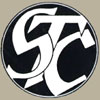
The STC Model 4033-A
cardioid composite microphone

The Stantel (Standard Telephones and Cables Limited) Cardioid is a composite microphone with the outstanding feature of an almost perfect heart-shaped (cardioid) polar response over a wide range of frequencies in both its horizontal and vertical planes. It is composed of a moving coil and a ribbon type microphone either of which may also be used independently, thereby affording three distinct types of microphone in one.

The significance of a heart-shaped characteristic is that the response is substantially uniform over a solid angle of about 120 degrees at the front of the microphone, while outside this area and in the rear, the microphone is comparatively dead. It is, therefore, pre-eminently suitable for all applications where sound from one direction is required to the exclusion of sound from another.
This one-sided pick-up characteristic of the cardioid microphone makes it invaluable for use in theatres and where audience noises are to be eliminated. Similarly, in television studios, noises off the set can effectively be cut out, whilst the frequency range of the microphone fully accords with the wide band transmission channels available for television sound.

This same uni-directional property of the cardioid microphone makes it equally suitable for suspending above a group of artistes. It will then provide uniform pick-up from each member of the group while remaining comparatively insensitive to reflected sounds from the walls and ceiling even under acoustic conditions which would normally render a room unsuitable for use as a studio. Another practical aspect of cardioid response in reverberant auditoria, where sound reinforcement is limited by acoustic feedback, is that the degree of discrimination between direct and reflected sound permits a substantial increase in working level without risk of singing.
Yet another noteworthy feature of this multi-purpose microphone is its comparative immunity from shock effects. The more robust construction of the ribbon element, while sacrificing nothing in sensitivity, makes it most suitable for mounting on a boom or in other positions where it is liable to be exposed to slight air currents.

THREE MICROPHONES IN ONE
Many studio presentations demand a microphone with bi-directional pick-up characteristics. A turn of the switch at the back of the microphone from the C or Cardioid position to the R or Ribbon-element-only position results in a figure of eight response with substantially dead areas on either side.

As a third application, the same microphone may also be used for announcing purposes by simply switching to the P or Pressure-unit-only position. It will then function as a simple moving-coil microphone whose response is similar to that of the 4035 type or the 4021 type with an acoustic baffle. This type has the merit that, unlike that of the ribbon type microphone, bass notes are not accentuated when the microphone is used for close talking. Response in the P position is non-directional up to a frequency of 2000 c/s but becomes directional at higher frequencies.

TECHNICAL DESCRIPTION
The cardioid shape of the polar response of this microphone is obtained by the combination of a ribbon element with a moving-coil unit. Theoretically, if the moving-coil element were sufficiently small to produce negligible diffraction effects in the frequency range, and were mounted clear of other reflecting objects, the combination of this type with a ribbon microphone which has a response proportional to the cosine of the angle of incidence, would produce a pure cardioid polar response curve. Practical mechanical considerations prevent the moving-coil element from being an omnidirectional transducer. The construction, therefore, has to be a compromise, and the response, as in all other microphones of this type, is accomplished by combining the outputs of the two components in a suitable electrical network.
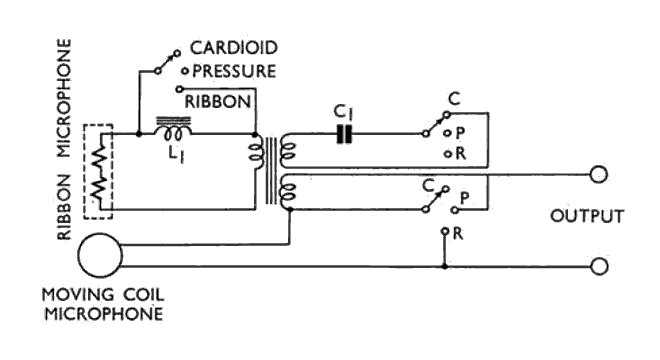
The schematic drawing shows an inductance L1, which in association with the capacitance C1, progressively attenuates the contribution of the ribbon element to the combined output. The effect of this at the higher frequencies is to confine the output of the combination to that of the moving-coil element alone. The operation of the threeáposition switch at the rear of the case can be seen from the schematic. In position C (Cardioid) both elements arc connected, their outputs being in series. In the position P (Pressure) the ribbon element is short-circuited, and in the position R (Ribbon) the moving-coil element is short-circuited.
SPECIFICATIONS
- Output Impedance: 50 ohms approximately, at 1000 c/s
- Open Circuit Response: As cardioid combination −80 dB†
Open Circuit Response: As ribbon or dynamic only −85 dB†
- Dimensions: Overall height 9 in. × 3 in. × 3½ in. (288 × 77 × 89 mm)
- Weight: 3 lb. (1360 grammes)
- Connections: To fit 4069-A jack‡
†0 dB = 1 volt/dyne/cm²
‡Suitable microphone stands are available in which
‡this jack is embodied in the upper part of the stand.
Text and monochromatic images are from the STC 4033-A brochure, available below for downloading.

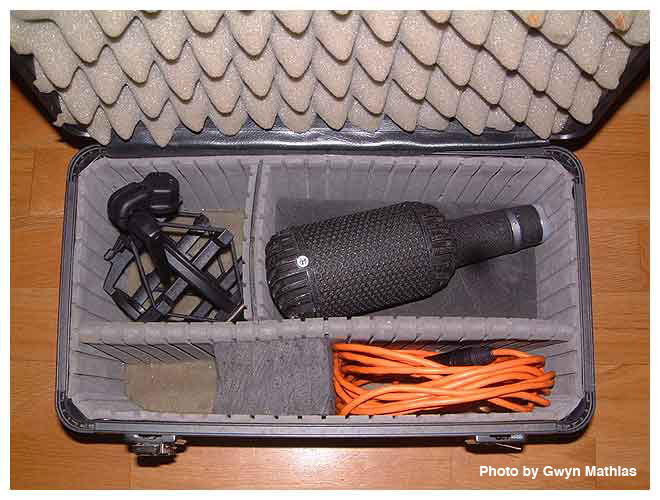
For those of us who use the old STC mics, it can be a challenge finding a cable to fit. Below are three images of an adapter that converts these mics for use with an XLR-equipped cable. The same adapter works with Western Electric mics as well as with Coles Electroacoustics mics. These adapters are not available at this web site.
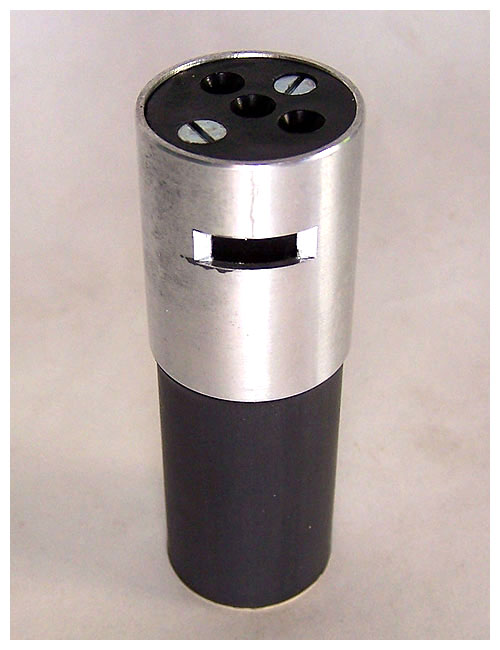
A few vendors offer these adapters on the Web.
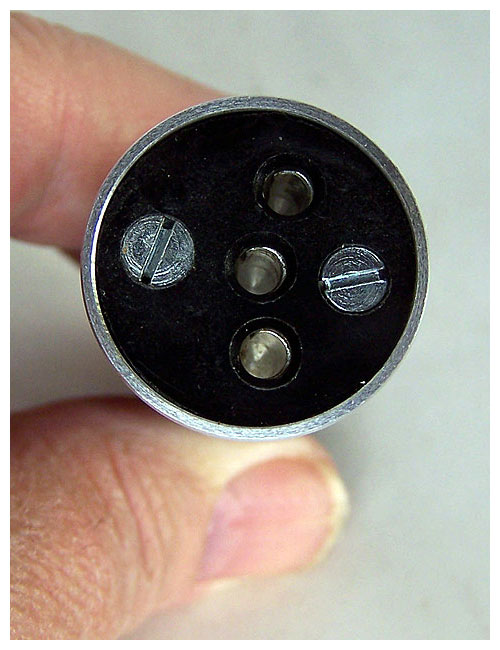
These convert the old WE, Coles, and STC connector to XLR.
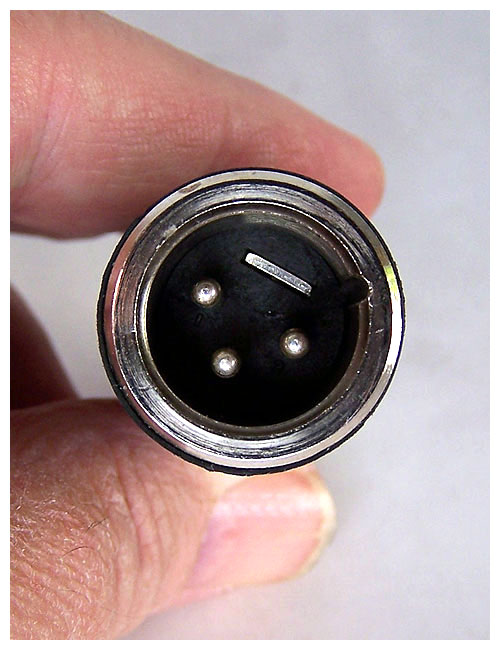
Obviously a contemporary XLR-equipped cable can then be used.

Download the brochure for this mic.
